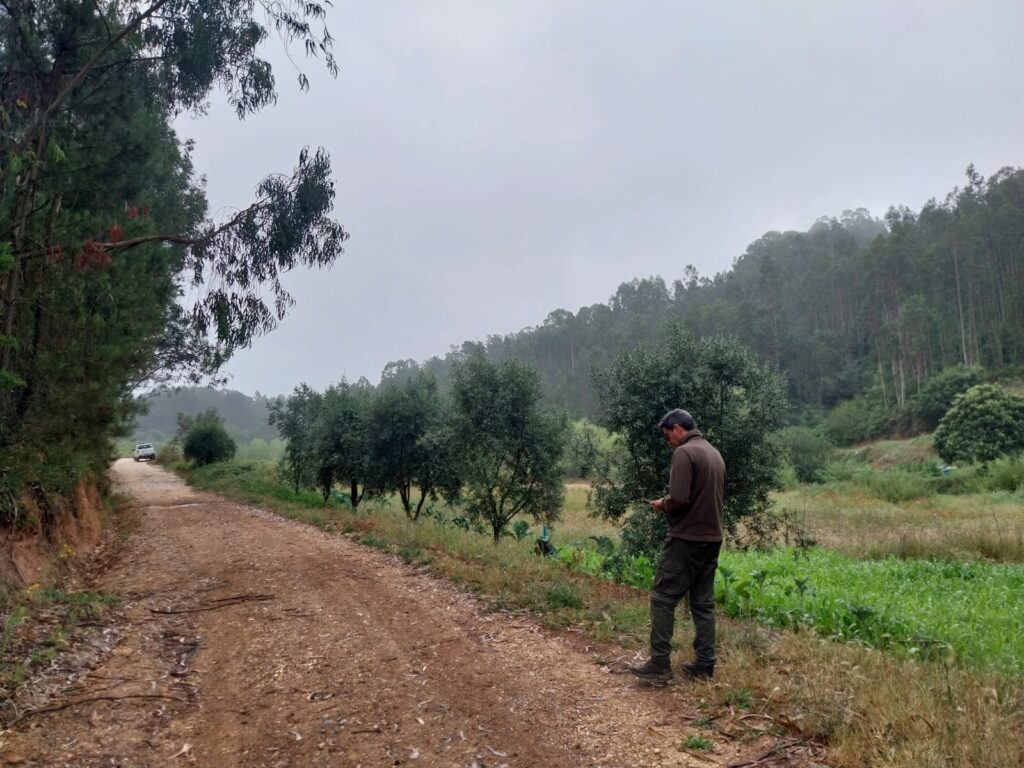One of the goals of the LIFE Iberconejo project is to establish an Iberian-scale monitoring system for the European rabbit, an essential basis for improving the management of the species. Over the last few months, a huge sampling effort has been carried out by the administrations and other entities within the framework of Iberconejo, using innovative technological tools. This will provide an accurate and updated portrait of the situation of the species in the Iberian Peninsula.
The first LIFE Iberconejo European rabbit sampling has been carried out in recent months, with more than 4,600 kilometres tracked in search of the species – a task that for the first time has been carried out following a common methodology, which will make it possible to obtain reliable and comparable data on an Iberian scale.
This is a notable advance for the management of the species because, despite its ecological and socio-economic importance, until now its monitoring in the Iberian Peninsula had been carried out following different methodologies between research groups, administrative regions and even between administrations in the same region.
Sampling has been carried out during the summer months, following the methodologies established in the LIFE Iberconejo monitoring protocols, agreed upon a year ago by the Spanish and Portuguese administrations.
Environmental rangers, technical staff from public administrations and LIFE Iberconejo, volunteers from WWF Spain and hunters have carried out the surveys, counting rabbits using two methodologies: Distance sampling, with long transects on vehicle, and latrine counting, with short transects on foot, which provide complementary and especially useful data in areas with low rabbit densities. A representative sample of the Mediterranean landscapes and ecosystems of the Iberian Peninsula has been covered, both in woodland and agricultural areas, in order to obtain the most accurate possible picture of the situation of the species.

LIFE Iberconejo uses SMART (Spatial Management and Reporting Tool) to collect data in the field and gather information from each region. This is a tool used on wildlife monitoring and protected areas management all over the world, which has been adapted within the framework of the project, although some administrations and interest groups continue to use other applications (Epicollet, Cibertracker, Hunting Observatory).

The aim of Iberconejo is to carry out these samples of wild rabbits systematically, on an annual basis, in the regions where the project operates – Andalusia, Castile-La Mancha, Extremadura in Spain, and Portugal – and to gradually integrate the rest of the Spanish Autonomous Regions into the project.
The sampling data will be combined with other existing data sources, such as hunting statistics, through a data analysis model – integrated hierarchical model – developed by researchers from the Instituto de Investigación en Recursos Cinegéticos (IREC – CSIC, UCLM, JCCM), the Universidad Complutense de Madrid (UCM) and the Centre for Functional and Evolutionary Ecology (CEFE-CNRS) of the University of Montpellier (France).
This has created a flexible system that can take advantage of the strengths of different data sources and technological applications, which will be able to integrate new monitoring methods and can even be adapted to other species in the future. With the information gathered this summer, LIFE Iberconejo hopes to publish an update of the distribution and population trends of the European rabbit in 2025, which will serve as a basis to establish a long-term, science-based management of the species.



